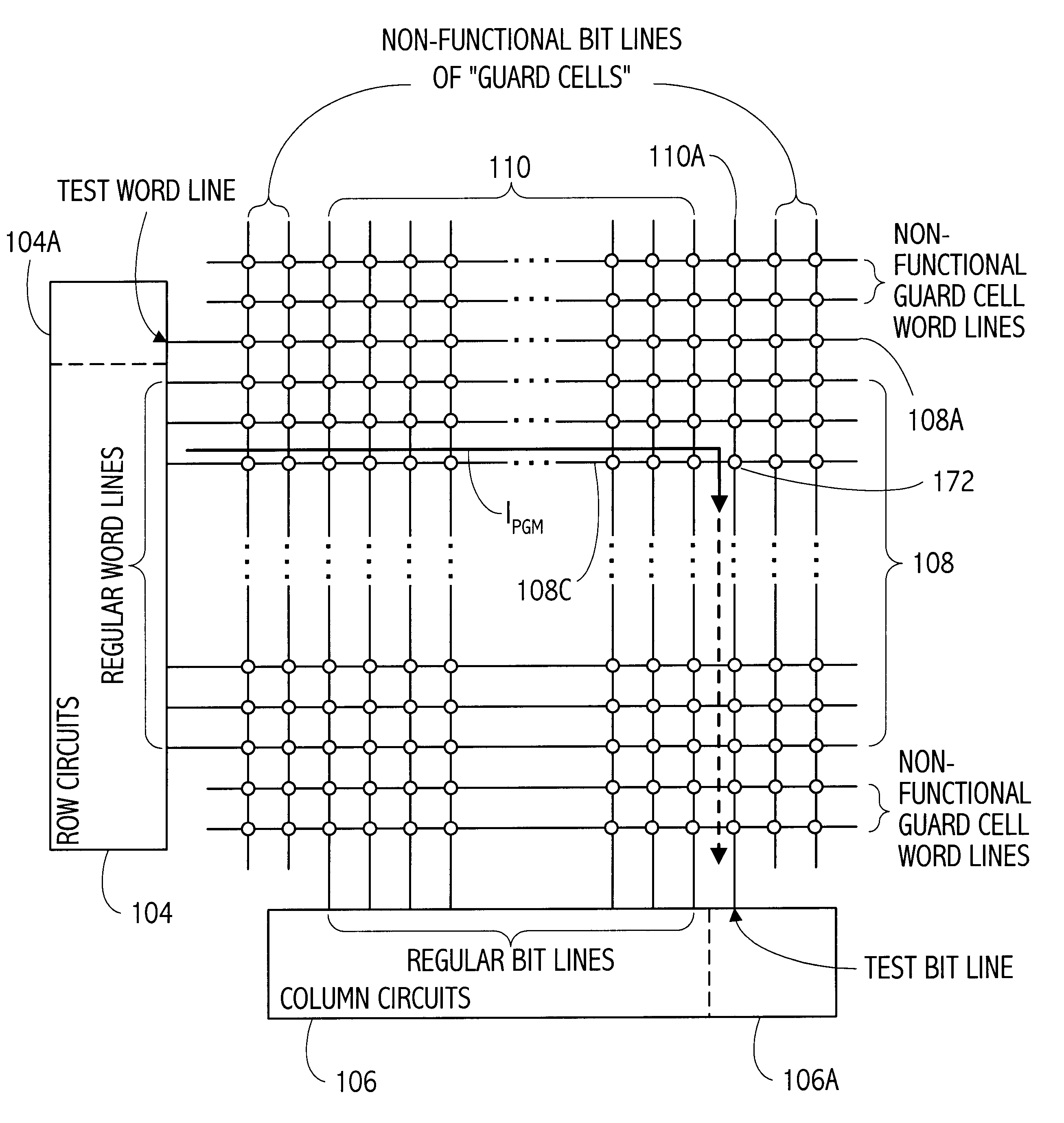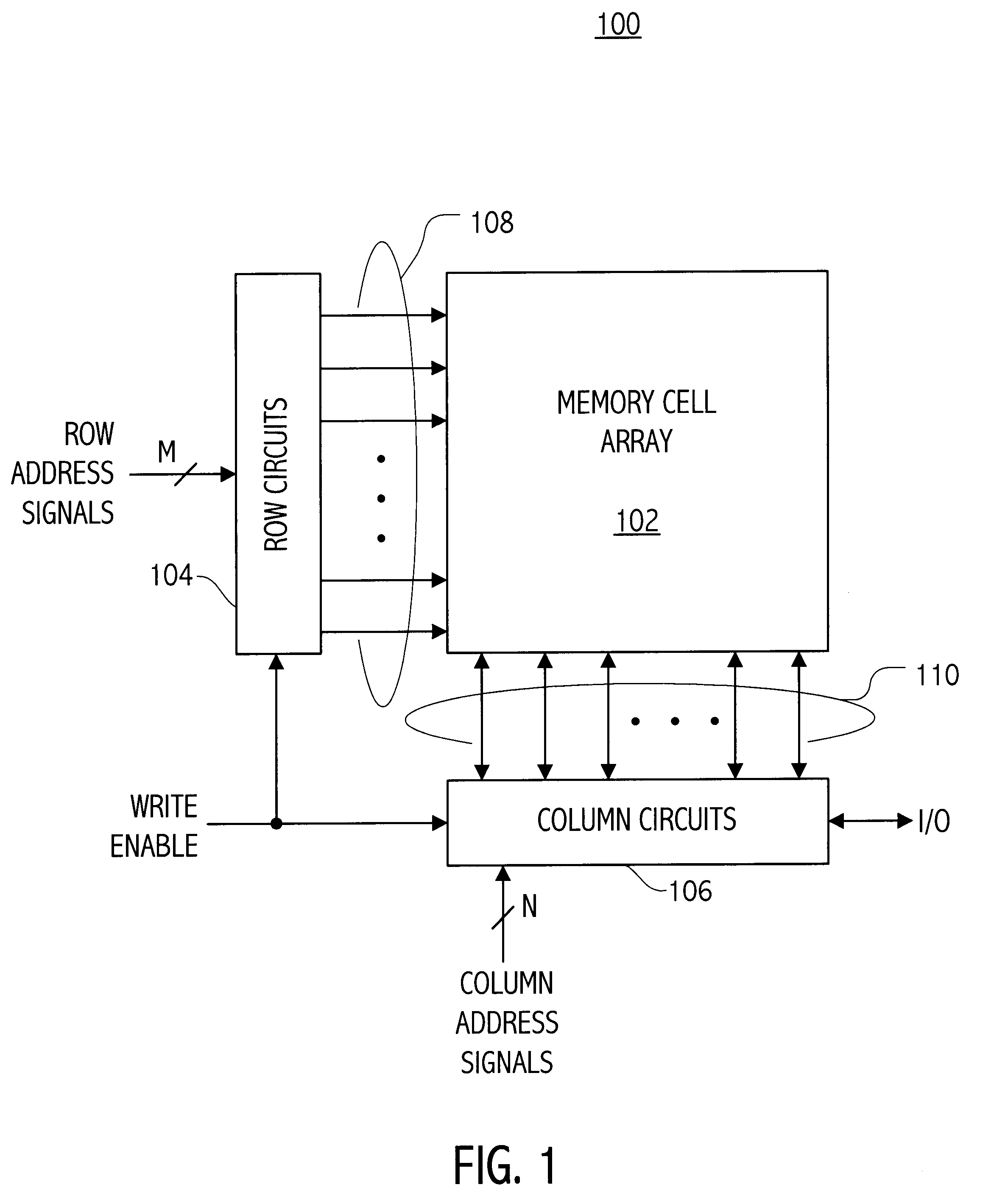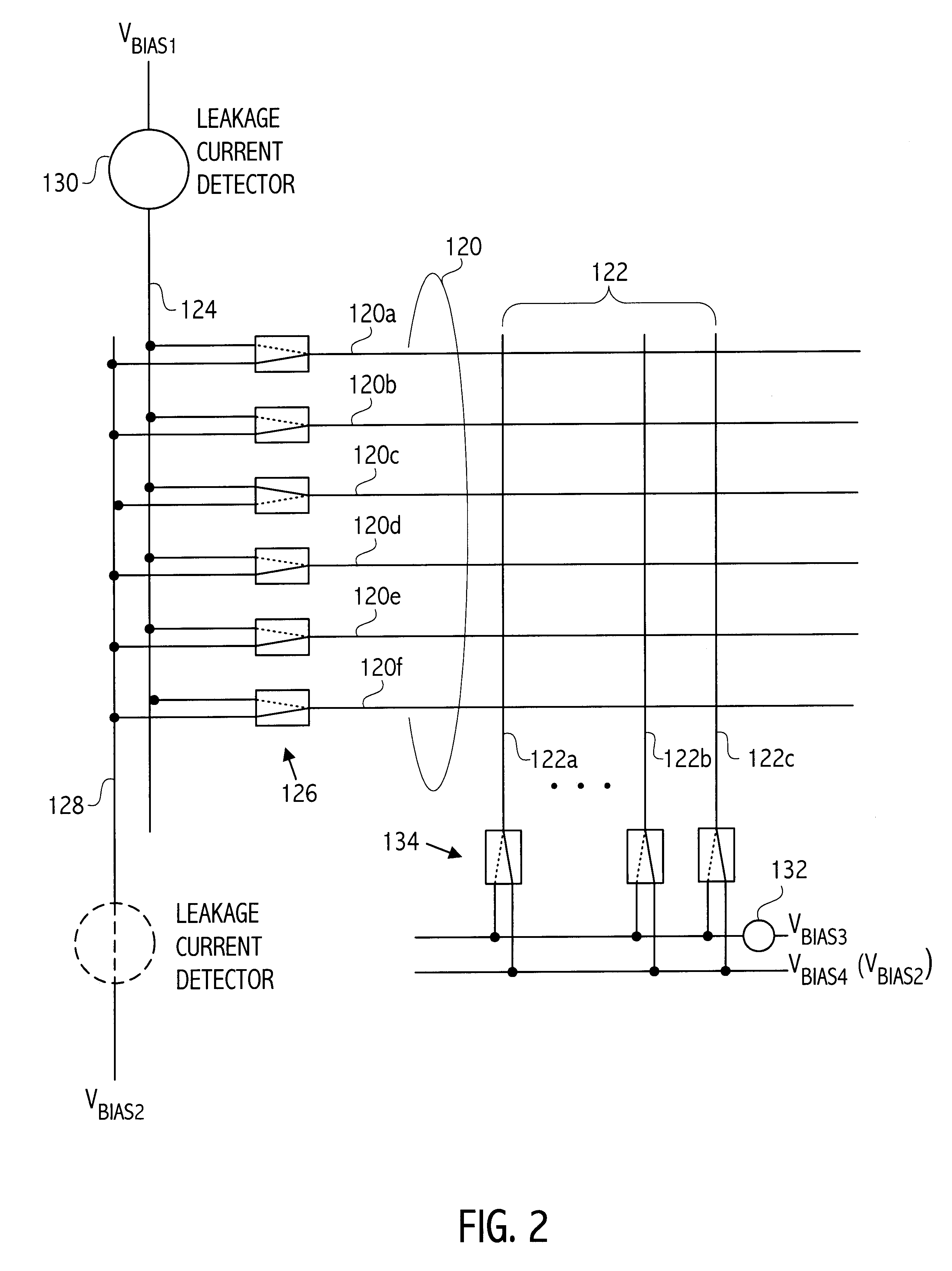Memory array organization and related test method particularly well suited for integrated circuits having write-once memory arrays
- Summary
- Abstract
- Description
- Claims
- Application Information
AI Technical Summary
Problems solved by technology
Method used
Image
Examples
Embodiment Construction
)
Referring now to FIG. 1, a block diagram is shown of an integrated circuit 100 including a memory array 102, which diagram may be useful to depict several preferred embodiments of the present invention. In one such embodiment, the memory array 102 is preferably a three-dimensional, field-programmable, non-volatile memory array having more than one level of memory cells, and which utilizes a read voltage different in magnitude from a write voltage. Preferred three-dimensional memory arrays are disclosed in commonly-assigned U.S. Pat. No. 6,034,882, entitled "Vertically Stacked Field Programmable Nonvolatile Memory and Method of Fabrication," which patent is incorporated herein by reference in its entirety. Another preferred three-dimensional, field-programmable, non-volatile memory array technology is disclosed in co-pending, commonly-assigned U.S. patent application Ser. No. 09 / 560,626, entitled "Three-Dimensional Memory Array and Method of Fabrication," filed Apr. 28, 2000 and nam...
PUM
 Login to View More
Login to View More Abstract
Description
Claims
Application Information
 Login to View More
Login to View More - R&D
- Intellectual Property
- Life Sciences
- Materials
- Tech Scout
- Unparalleled Data Quality
- Higher Quality Content
- 60% Fewer Hallucinations
Browse by: Latest US Patents, China's latest patents, Technical Efficacy Thesaurus, Application Domain, Technology Topic, Popular Technical Reports.
© 2025 PatSnap. All rights reserved.Legal|Privacy policy|Modern Slavery Act Transparency Statement|Sitemap|About US| Contact US: help@patsnap.com



